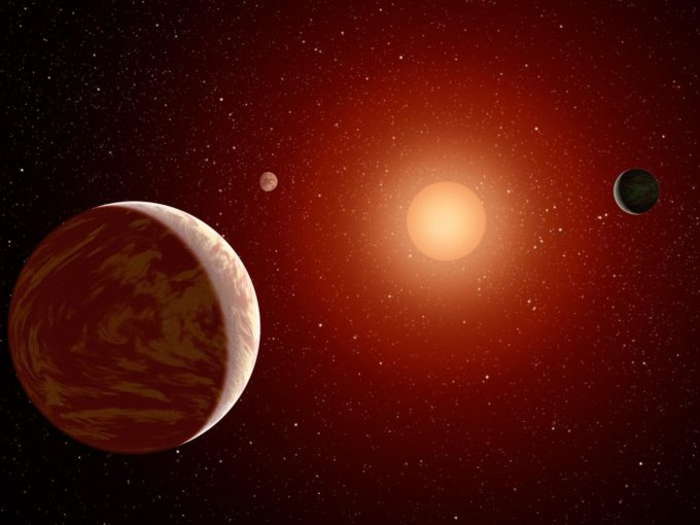James Webb Telescope will unlock ‘secrets of a star system’ that could help us find alien life
Scientists are focusing on an M-dwarf star in order to understand if terrestrial worlds can replenish their atmospheres

Scientists will finally learn whether Earth-sized planets in our ‘solar neighbourhood’ have the necessary atmosphere to home life.
The James Webb Space Telescope, the most powerful of its kind, will launch this year to help scientists find M-dwarf stars, the most common of its type.
“As a starting place, it is important to know whether small, rocky planets orbiting M-dwarfs have atmospheres,” said Daria Pidhorodetska, a doctoral student in UC Riverside’s Department of Earth and Planetary Sciences, because “it opens up our search for life outside our solar system.”
At the centre of the research is a M-dwarf called L 98-59, which has eight per cent of the sun’s mass and is located 35 light years from Earth. After these M-dwarfs form, they shine two orders of magnitude brighter than normal which can evaporate water from the surface and destroy gases in the atmosphere.
“We wanted to know if the ablation was complete in the case of the two rocky planets, or if those terrestrial worlds were able to replenish their atmospheres,” Pidhorodetska said.
The researchers modelled four scenarios for L 98-59’s atmosphere: one in which it is dominated by water, or hydrogen, or carbon dioxide, and one where only oxygen and ozone is left – with the latter being the most likely.
“The amount of radiation these planets are getting at that distance from the star is intense,” Pidhorodetska said.
The L 98-59 planets are much closer to their star than Earth is to the sun, orbiting the star in less than a week. This makes observing their transit operations much more cost effective than more distant planets.
Even if the planets in the system are not capable of sustaining life, information from them will be valuable to astronomers in determining what could be possible on Earth-like worlds in other areas of the galaxy.
“We’re on the precipice of revealing the secrets of a star system that was hidden until very recently,” Pidhorodetska said. The study was published in the Astronomical Journal.
Join our commenting forum
Join thought-provoking conversations, follow other Independent readers and see their replies
1Comments